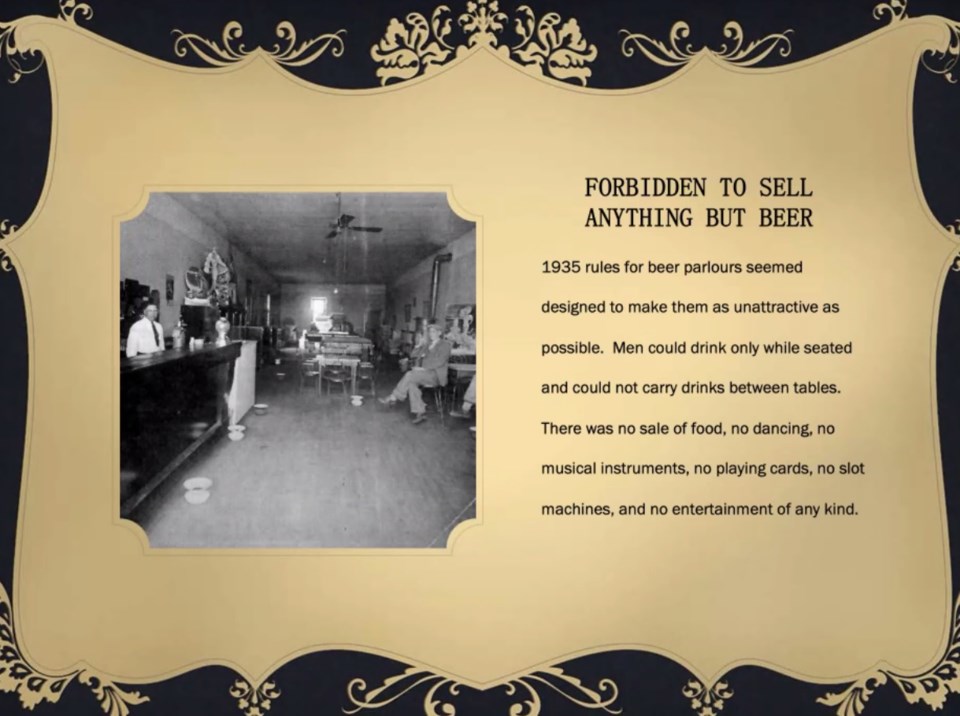The Western Development Museum (WDM) hosted its latest Virtual Coffee Club meeting this Feb. 22, where Joan Brewerton gave a presentation about the history of old hotels in small town Saskatchewan.
These hotels, Brewerton explained, are among the oldest and most common forms of business enterprise in rural areas of the province. Many of these “tenacious old hotels” still stand on the corners of streets with such typical names as “Railway Avenue” and “Main Street.”
Brewerton had described the longevity of these buildings as a testament to the determination of the people who owned and operated these hotels over the past century. This is also, of course, a testament to the fact they haven’t burned down – which has been an all-too-familiar experience in some parts of the province.
During her presentation, Brewerton touched on some social and political changes that influenced the operation and success of these establishments. These social conditions included rules imposed during the 1930s, the first legislation allowing women to drink beer, and limitations on drinking imposed during the Second World War.
Back in 1935, government-imposed rules for beer parlours seemed to be designed to make them as unattractive as possible for patrons.
At the time, these establishments were designed for men only, and to discourage even their participation, there was no permitted sale of food, no music or dancing, and no other entertainment allowed on site. Men could only drink while seated, and carrying drinks between tables was prohibited.
This would serve as a hurdle for beer parlours in the province, but later in 1935 and after much debate in legislature, women in Saskatchewan were granted the right to drink beer in public. This new legislation required separate, women-only parlours and opened the doors to many more patrons.
The ongoing reluctance to deregulate the industry was due to the common perception at the time that beer parlours were “morally compromised” places.
During the Second World War, then-Prime Minister W. L. Mackenzie King insisted that Canadians cut back on drinking.
King did not prohibit the sale and consumption of the popular drink, however. His legislation included the reduction of beer’s alcoholic content during the war years, prohibited advertising of any kind on beer and spirits labels, and provinces were asked to shorten the hours of operation for beer parlours and liquor stores.
These measures were outlined in the 1942 Wartime Alcoholic Beverages Order.
If you missed the Feb. 22 presentation live on Zoom, stay tuned as the WDM archives all its free-to-attend presentations for anyone to access and view at a later date.
The next Virtual Coffee Club meeting will take place Thursday, March 21, and is titled “Boomers in Outer Space, Muscle Cars, Rock & Roll and Ice Cream.” This upcoming presentation will be led by Brian Gallager and will explore some of the opportunities and unexpected social changes the Baby Boomer generation experienced as they grew up.
This next presentation will be “a comparative look at what has happened since the (Second) World War with (a) focus on Canada’s prairies and how the experience of Indigenous and mainstream populations has been very different,” according to the museum.
To attend the upcoming virtual meeting on the Zoom app, visit WDM.ca/CoffeeClub to register, or call the museum’s program co-ordinator Alexis Jones at 306-693-5989.
To access the museum’s archived Virtual Coffee Club presentations, visit the WDM’s YouTube page, ‘WDM Coffee Club.’




